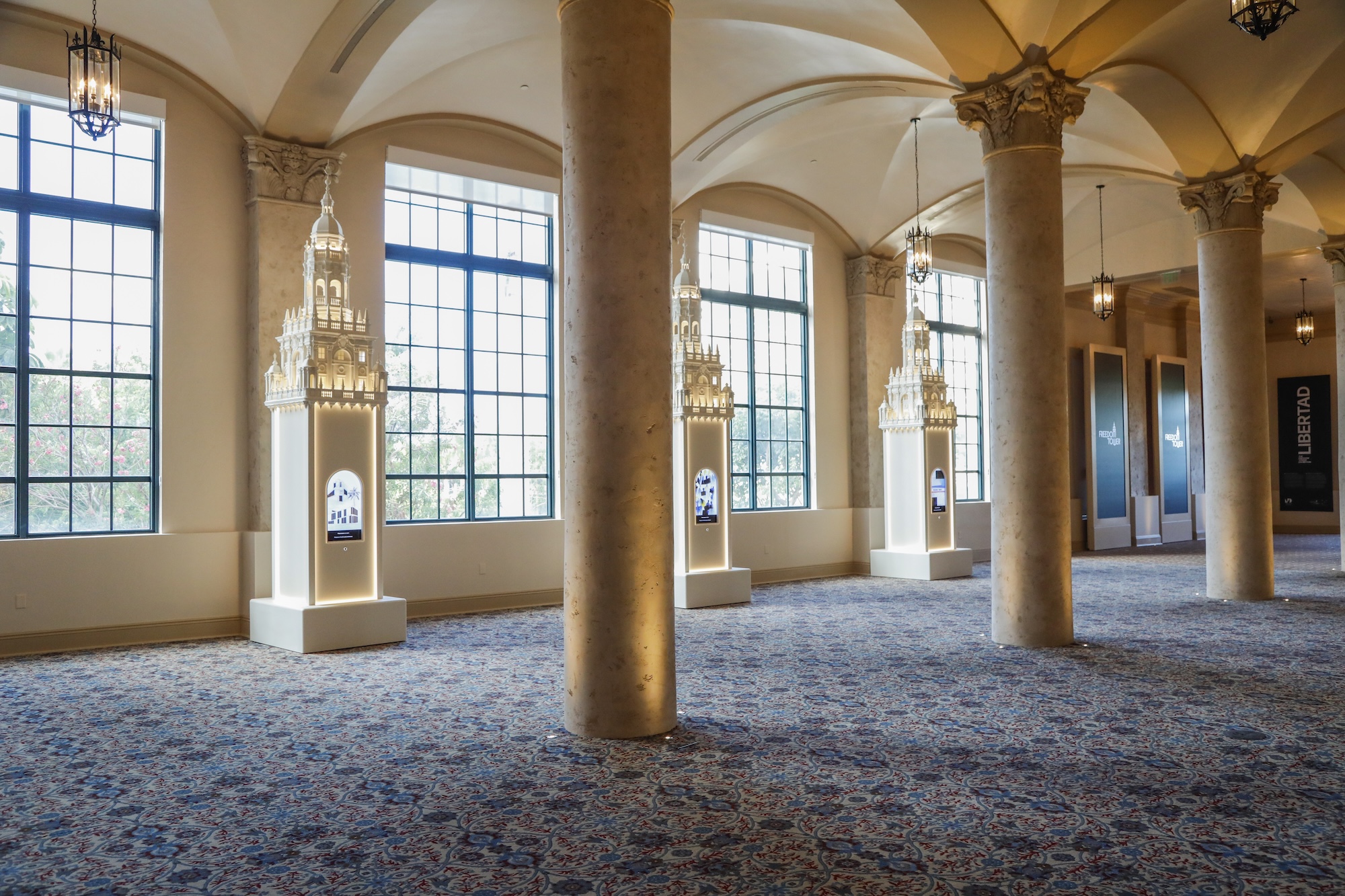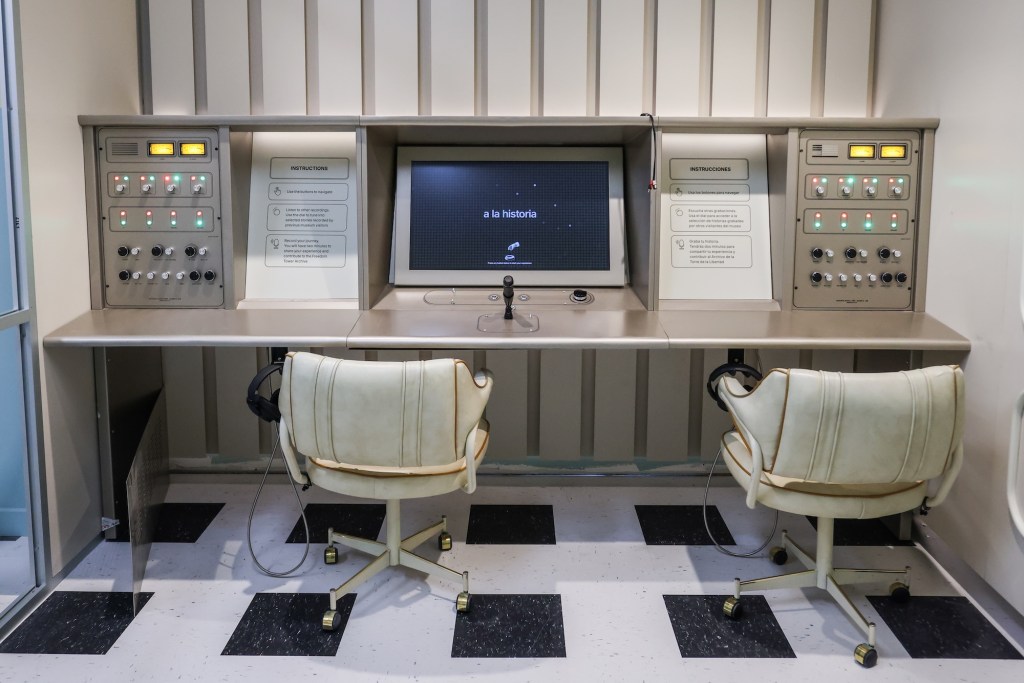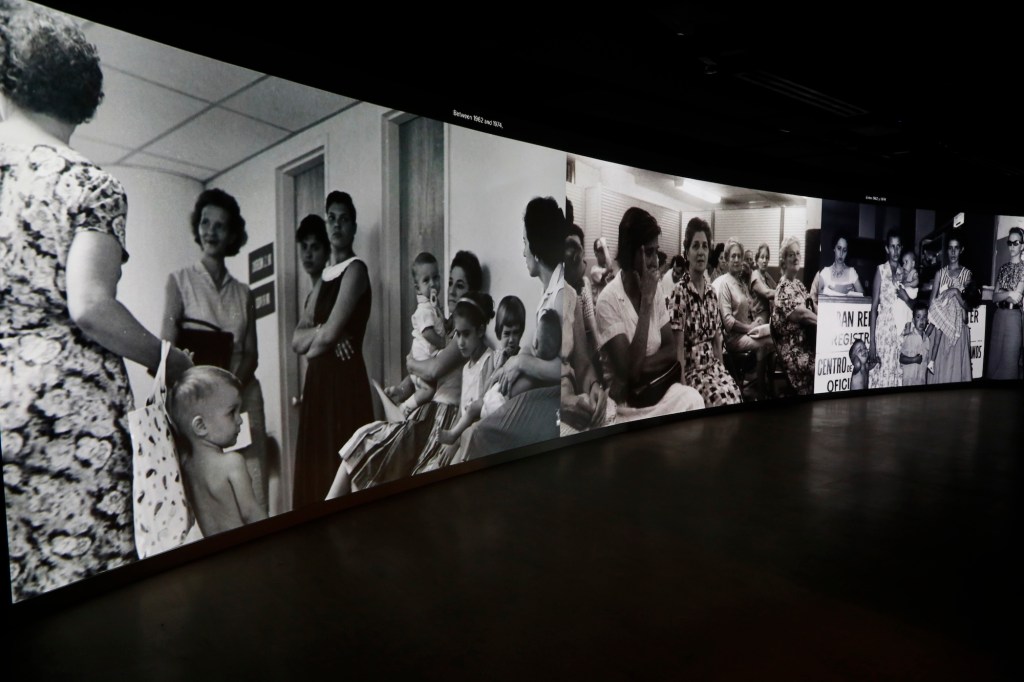
Freedom Tower photo

Audio By Carbonatix
When the Freedom Tower and its deeply affecting, brilliantly realized new museum dedicated to the Cuban refugee experience reopened to visitors in mid-September after a two-year, $25 million renovation aligning with its centennial, figures ranging from Miami Mayor Francis Suárez and Florida Lieutenant Governor Jay Collins to Greater Miami Chamber of Commerce CEO Alfred Sanchez and Grammy-winning mogul Emilio Estefan came out to sing its praises.
Which is great. Amazing, even. And the post-ribbon-cutting speeches before a phalanx of TV cameras and VIPs were all clearly heartfelt and lovely. But for Miami Dade College Museum of Art and Design Executive Director and Chief Curator Amy Galpin, it wasn’t until a woman — one of more than four hundred Miamians who had participated in the museum’s three-year-long oral history project — tugged at her sleeve at the end of a tour that the conservator in Galpin could finally breathe a full sigh of relief.
“Thank you,” the woman said. “I feel like I don’t have to write a memoir now. I can just bring my children, grandchildren, and anyone else who wants to know what it was really like, and they can just experience it for themselves.”
“As an art historian, my work has always been driven by the exploration of the human condition and human emotion and trying to bring people’s stories to life in the best and most respectful way possible,” Galpin tells New Times. “It’s such a vulnerable and brave thing to share your story, your struggles…It was very important to us that we honored and gave dignity to that. To see people who gave us that trust appreciating the end result is deeply, deeply impactful, and one of the most rewarding aspects of being a part of this project.”

Freedom Tower photo
Free Press and Free People
Built in 1925 to serve as headquarters for the Miami Daily News, the Freedom Tower became a processing center in 1962 for Cubans fleeing the Castro regime. Over the next 12 years, more than 600,000 refugees passed through its doors. Soon, this beautiful and imposing 17-story building modeled after the belltower of the Seville Cathedral in Seville, Spain — and designed by the same firm responsible for the Biltmore in Coral Gables and the Waldorf Astoria in New York — earned a reputation as “Miami’s Statue of Liberty,” a symbol attracting visitors ranging from President Ronald Reagan to King Juan Carlos I of Spain. When Celia Cruz died, her funeral was held at the Freedom Tower.
Despite the love, by 2001, the building landed on the National Trust for Historic Preservation’s list of the “11 Most Endangered Historic Places.” Four years later, it was donated to Miami Dade College for stewardship, and in 2008, the U.S. Department of the Interior formally designated it a National Historic Landmark, setting the stage for its current revitalization.

Freedom Tower photo
Into the Next Century
Three years ago, MDC began the process of workshopping what form a new presentation might take. “There were so many conversations with staff, with community stakeholders, with scholars, with artists, with exhibition designers about the flow, the content, the naming of the sections — everything,” Galpin says.
All of these conversations culminated in a multimedia, state-of-the-art museum that intertwines digital and physical installation elements for an immersive experience that meets visitors of all generations where they’re at, but doesn’t leave them there. There is a strong crosspollination of ideas as well as styles of learning and interaction.
“Obviously, we have a lot of screens in our exhibition and we’re embracing technology,” Galpin says. “But I still believe in the power of objects and material culture and fulfilling that human need to gather in real-world spaces. The Freedom Tower is very much designed to be a communal experience.”

Photo by Shawn Macomber
The Latest Incarnation
Initial exhibitions on display include the two-story “Libertad” (“stories of people who came to Miami seeking freedom, and how their resilience helped shape the city”), “Languages of Migration” (“pairs rare ancient and colonial works with powerful contemporary art”), “We Carry Our Homes With Us” (“[brings] a deeply personal lens to themes of belonging and displacement”), and “Unidad: The World’s Game” (“with artifacts from Pelé to Messi and interactive installations, it reminds visitors that sport, like freedom, has the power to transcend boundaries”).
There are stunning portraits by award-winning photographer Clara Toro, modern art sculptures, a life-size recreation of a processing office, documentaries, research desks, and accessible libraries of those oral histories, kinetic video panels, and the things refugees carried, small and large. The experience is sometimes harrowing, sometimes poignant, sometimes sweet, sometimes funny, but always illuminating, stirring, and inspirational. Galpin says she hopes “people who have not lived this experience also see themselves as a part of this story.” Mission accomplished.
Amidst all of this, a quote from the heroic dissident Czech playwright and poet Václav Havel (1936-2011) stands out: “Hope…is an orientation of the spirit; an orientation of the heart. It transcends the world that is immediately experienced and is anchored somewhere beyond its horizons.”
On a practical level, the above offers a historical validation of that hopeful orientation. After all, Havel’s participation in the Prague Spring and subsequent work with Charter 77, despite state persecution and multiple incarcerations, helped usher in the 1989 Velvet Revolution, the fall of communism, and his election as the first president of a free Czech Republic. (Put another way: How do you like them apples, Lenin?)
Perhaps more importantly, however, on a philosophical level, the poet-stateman’s words suggest that resistance to oppression is its own form of artistic expression; that the yearning to live free is universal.
That may be a sentiment first expressed in Prague, but it’s difficult to imagine one more spiritually and culturally resonant with our kaleidoscopic Miami culture — or this new era of the Freedom Tower that translates it so well.
Freedom Tower. 600 Biscayne Blvd., Miami; 305-237-7700; mdc.edu/freedomtower.